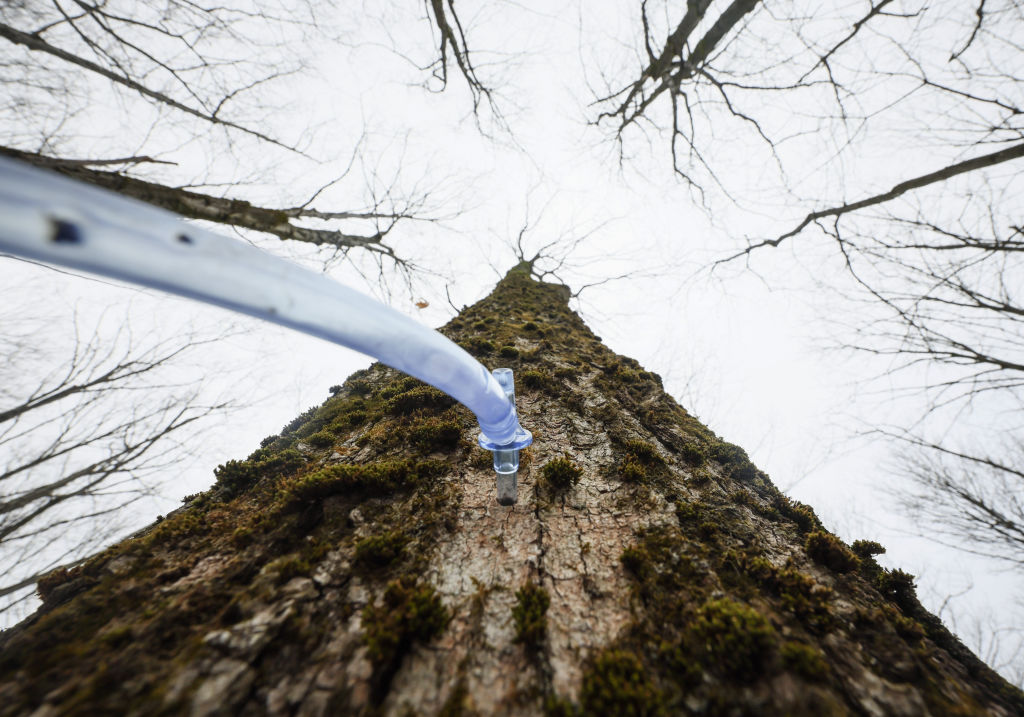Whether you’re putting it over pancakes, flavoring bourbon or consuming it on its own, few things are as delicious as maple syrup. Years ago, on a trip to Vermont, I made a stop at the New England Maple Museum — which I’m happy to report is still open, albeit under new ownership — and learned countless things about the ways in which maple syrup is harvested and produced.
Yes, there was also some tasting involved.
As is the case with countless types of food, the history of maple syrup production is fascinating in its own right. In an excerpt from his new book A Year of Moons: Stories From the Adirondack Foothills published at Literary Hub, Joseph Bruchac revisited the Indigenous roots of harvesting maple syrup. “The first white man to comment on making maple syrup was John Smith in the seventeenth century,” Bruchac writes. “He wrote in his journals about how the Powhatan women collected the sap from the trees by making a V-shaped gouge with an axe and putting a bark basket beneath it.”
The excerpt also revisits some historical methods of turning maple sap into syrup that have been used over the years — including putting sap into a canoe and adding hot stones to it.
“To taste it, to drink it, is to feel your body flowing like those trees,” Bruchac writes. And while the “is maple syrup a superfood” debate is still on, maple syrup’s delicious qualities have never been a contentious subject.
Every Thursday, our resident experts see to it that you’re up to date on the latest from the world of drinks. Trend reports, bottle reviews, cocktail recipes and more. Sign up for THE SPILL now.


















